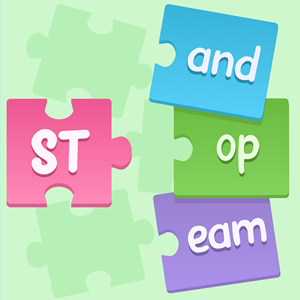Phonics Phase 4: Consolidation

Phonics Phase 4: Consolidation
Children do not learn any new graphemes in this phase. Instead, they practise the phonics skills they learned in Phase Three. They use their phonics knowledge to read words they already know and to sound out and blend the graphemes in words they see for the first time. As they continue to practise, young readers begin to develop their ability to read easily and fluently.
Specific skills that pupils develop at this phase are:
- How to blend groups of consonants which are spoken together, such as the str trigraph in string and the lk digraph in milk.
- Read contractions, such as I'm for I am, and I'll for I will, and understand that the apostrophe replaces missing letters.
- How to read longer words.
- How to divide words into syllables.
- How to read compound words, such as windmill and lunchbox that are made by joining two short words together.
Children continue to learn tricky exception words. These include do, so, the question words when and what, and the verb forms said, have, like and were. Other exception words introduced in this phase are some, come, there, little, one and out.
When children write, their spelling will not always be correct, but it should show that they know how to apply phonics rules by making connections between the sounds they hear and how to write down those sounds.
At this stage, children should be finding it easier to read aloud. They should be able to read words they have seen before without sounding them out, and to sound out new words easily. Once they reach this point, they are ready to begin learning the more complex phonemes which will be introduced in Phase Five.
Continue reading: Phonics Phase 5: Further Development

